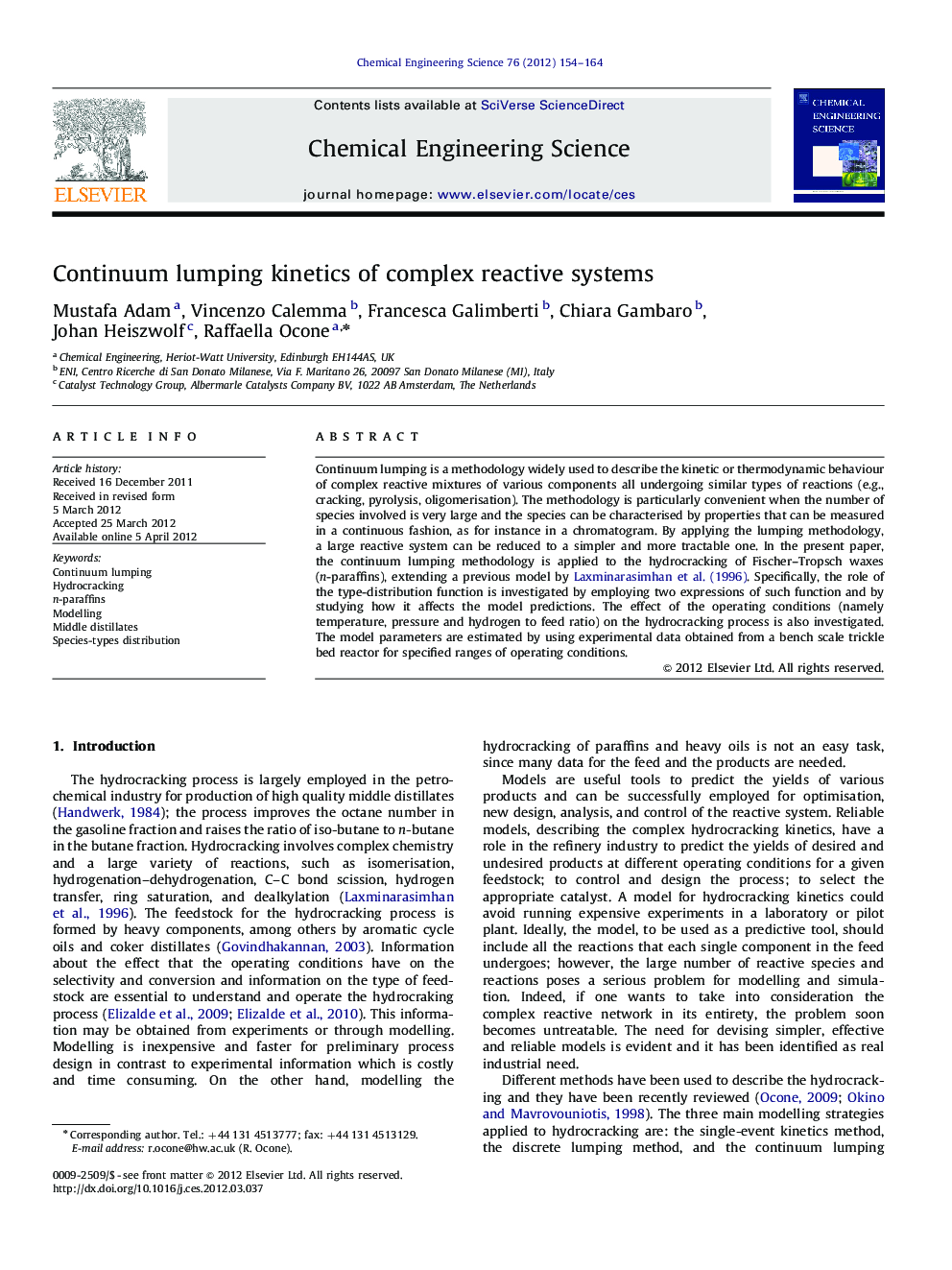| Article ID | Journal | Published Year | Pages | File Type |
|---|---|---|---|---|
| 155804 | Chemical Engineering Science | 2012 | 11 Pages |
Continuum lumping is a methodology widely used to describe the kinetic or thermodynamic behaviour of complex reactive mixtures of various components all undergoing similar types of reactions (e.g., cracking, pyrolysis, oligomerisation). The methodology is particularly convenient when the number of species involved is very large and the species can be characterised by properties that can be measured in a continuous fashion, as for instance in a chromatogram. By applying the lumping methodology, a large reactive system can be reduced to a simpler and more tractable one. In the present paper, the continuum lumping methodology is applied to the hydrocracking of Fischer–Tropsch waxes (n-paraffins), extending a previous model by Laxminarasimhan et al. (1996). Specifically, the role of the type-distribution function is investigated by employing two expressions of such function and by studying how it affects the model predictions. The effect of the operating conditions (namely temperature, pressure and hydrogen to feed ratio) on the hydrocracking process is also investigated. The model parameters are estimated by using experimental data obtained from a bench scale trickle bed reactor for specified ranges of operating conditions.
► The continuum lumping methodology is applied to the hydrocracking of waxes. ► The role of the “type-distribution” function is investigated. ► The effect of the operating conditions on the hydrocracking process is investigated. ► The methodology is checked against experimental data taken at the ENI labs.
